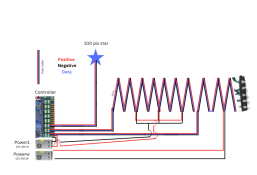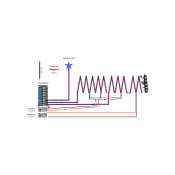nicholas.buckler
New elf
- Joined
- Dec 13, 2015
- Messages
- 29
Hi All,
new to lighting up, want to get into pixels next year,
I think that I have drawn here Is correct for a 12v mega tree. 2 strings, 50 lights per run, with 20 runs,
Hints, tips, feedback appreciated - I think I should start the second string on the 11th run and connect the 2 negative lines where the new data line feeds in
Let me know

new to lighting up, want to get into pixels next year,
I think that I have drawn here Is correct for a 12v mega tree. 2 strings, 50 lights per run, with 20 runs,
Hints, tips, feedback appreciated - I think I should start the second string on the 11th run and connect the 2 negative lines where the new data line feeds in
Let me know






